
There's been a perfect storm of bad news for brewers - from the war in Ukraine hiking barley and transport costs, to inflation lifting excise duties, the closure of Marsden Point cutting off local CO2 supplies, and international shortages of hops, cans, even packaging materials. Price hikes are on the way.
Joseph Wood started making beer in a shed in New Plymouth more than a decade ago. Now he’s a master brewer, and the beers he makes at Liberty Brewing north of Auckland are some of the most awarded in the country.
But he’s never seen anything like the past 12 months.
“It’s a miracle we’ve managed to keep stock on the shelves. People moan about the price of beer – they’ve been lucky to get it at all."
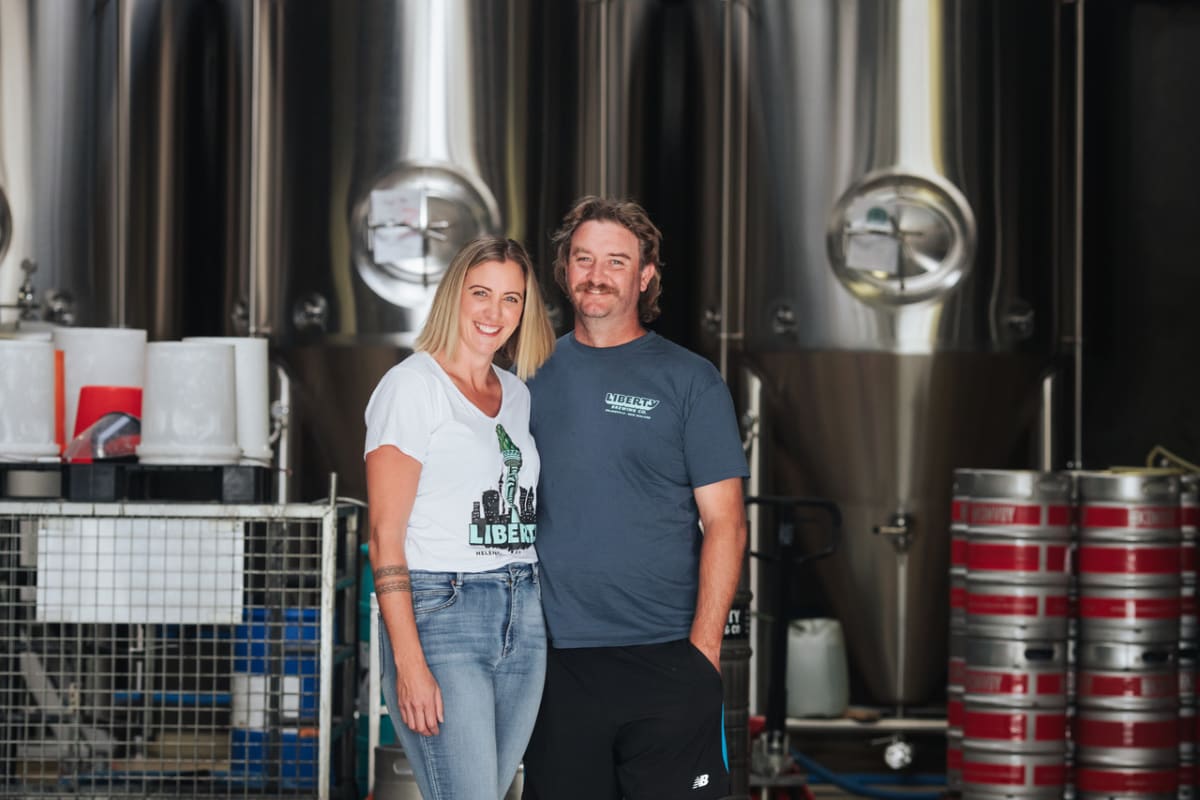
As well as running Liberty with his wife Christina, Wood is also president of the Brewers Guild of New Zealand. What his business has been through over the past few months has been repeated across the country, with craft brewers some of the worst-hit.
“You name it, the price has gone up this year. Energy costs, water supply, our leases have gone up shitloads, the cost of the returnable pallets we put our boxes on is up almost 30 percent, the plastic we wrap our pallets in is up 20 percent.”
“It was one thing after another. It was a miracle people could still go down to the supermarket and buy a pack of beer.” – Joseph Wood, Liberty Brewing
Meanwhile, the cost of freight - raw materials in and finished products out - has doubled in the past year, Wood says. And the price of aluminium almost doubled in 2021, sending the cost of cans soaring, though it has since dropped back a bit.
Aluminium prices (US$/tonne)
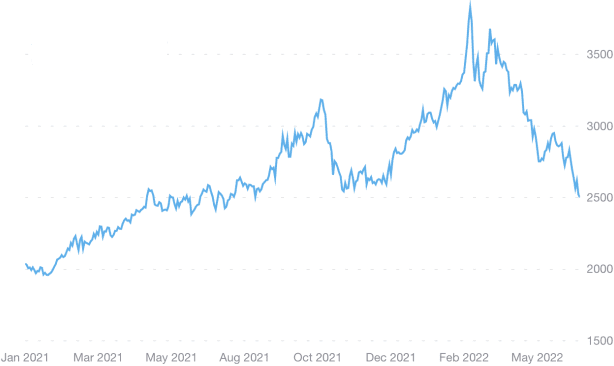
Then there were the shortages. Wood says there have been times over the past six months when he couldn't get CO2, pallets, cardboard, aluminium, or plastic; sometimes more than one thing was unavailable at the same time.
People were stockpiling the returnable, pooled CHEP pallets, and the lead time for cardboard went from four weeks to 12 weeks, he says.
"People had to come up with the money to buy and store three months' worth of cardboard in one month - your cash flow gets knocked around, just for cardboard," Wood says.
“It was one thing after another. It was a miracle people could still go down to the supermarket and buy a pack of beer.”
Many of these problems aren’t unique to craft brewers - companies across the country (and the world) are facing shortages and price hikes.
But with New Zealand brewers, there are some very specific nightmares.
Take barley, the grain mostly used to make malt, a critical ingredient in beer. Russia and Ukraine are two of the largest barley-growing countries, together responsible for about 18 percent of global barley production, and 30 percent of global barley exports.
Barley supplies have been massively impacted by Russia’s invasion of Ukraine and the ensuing war.
International barley prices for June 2022 are more than 50 percent higher than they were in June 2021.
International barley prices (US$/tonne)
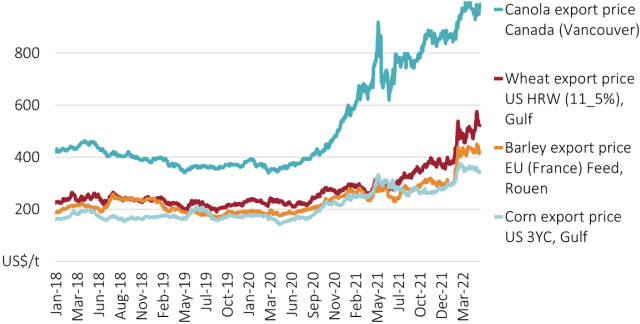
New Zealand grows its own barley, but different beers need different malts from different barleys - so craft brewers use imported as well as local malted barleys - Wood imports 5-10 percent.
Anyway, barley is a commodity market. When barley prices rise in Europe, they go up here too.
‘It’s not looking pretty'
Gabi Michael is co-owner of Gladfield Malt with husband Doug. Gladfield grows barley and is New Zealand’s biggest local producer of specialist malts.
Michael says her Kiwi brewery customers have been largely cushioned so far from international barley price increases because they buy on contracts negotiated at pre-war prices.

Gladfield will hold prices this year, she says, but “Covid plus shipping plus Ukraine” means international market conditions will hit next year.
“We wIll have to adjust our prices and it’s not looking pretty.”
As the market adjusts and farmers around the world grow more grain to meet demand and take advantage of high prices, the cost of barley will start to fall again, she says. But there could be some hard times - and tight margins - for her and others in the meantime.
For her business, it will be about sharing the pain with customers, she says.
“Next year, 2023, will be a year to remember, where you have to call in some favours, where you think about what you can afford.
“Sometimes your margins get thinner and thinner to the point you ask yourself, ‘Why am I doing this?' But we’ve got three children, we see our business as a next generational thing. We are prepared to let the business tick over to make sure we have a market to play in in the future.”
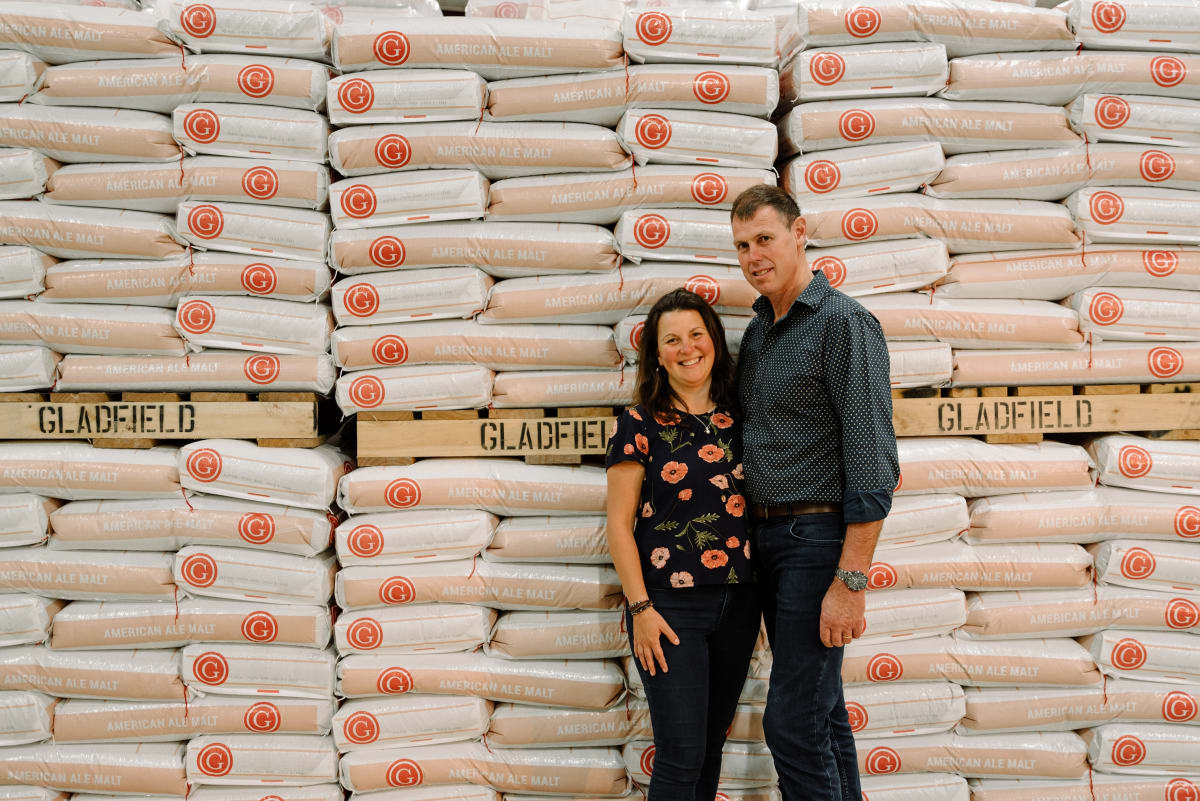
It’s not just barley, Michael says. Like the breweries, Gladfield is being hit by a full range of price hikes in its supply chain.
“It’s growers, LPG, diesel, electricity, bags, the minimum wage. I haven't seen any business keeping their prices the same as in 2020-2021. Sometimes it’s a 30 percent increase, sometimes 5 percent, depending on the supplier.
“Just one example - bags. They’ve gone up from 49 cents to 61cents each. It’s uglier than people realise.”
The Marsden Point factor
Then there’s carbon dioxide. CO2 is another critical part of beer-making. It enhances the flavour of the beer, maintains the iconic foam head after it’s poured, and is used right through the process – from the tank and the lines to the cans and the bottles - to push out oxygen, which makes beer go stale faster.
In New Zealand, the main carbon dioxide supplier for the drinks market used to be Refining NZ - the gas is a by-product of the oil refining process. When the Marsden Point refinery closed down in March, brewers lost their local source of CO2. Worse, an equipment breakdown six weeks before the shutdown meant CO2 production stopped suddenly and unexpectedly - apparently it wasn’t worth mending the machine when the plant was closing anyway, Wood says.
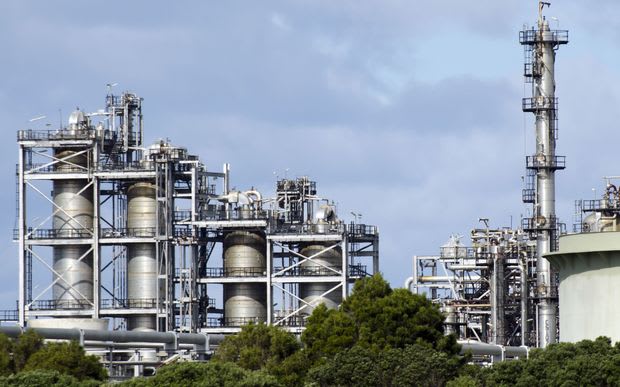
For a while, brewers like Liberty were forced to use nitrogen, at double the price of CO2. Now they source carbon dioxide from Southeast Asia and costs have gone up around 30 percent.
“Carbon dioxide is a significant part of our business - maybe 2-5 percent of the total cost of making the beer,” Wood says. “We bring in 45kg tanks and we go through 20 of them a week.”
Beer, babies and taxes
Meanwhile, a law change making it compulsory for all alcohol drinks to carry warnings about the impact on mums and babies during pregnancy by mid-2023 will mean changes to all packaging - another cost increase.
And from July 1, brewers - and their customers - will also be faced with a big increase in tax. Excise duties on alcohol and tobacco are based on the Consumer Price Index, so when inflation starts rising, so does the tax on beer.
Last year’s July 1 excise increase was 1.5 percent; this year it will be more than four times that at 6.9 percent. With tax making up around 20 percent of the cost of producing beer, that’s equivalent to tax of 55 cents on a bottle of full strength beer and 71 cents on a pint.
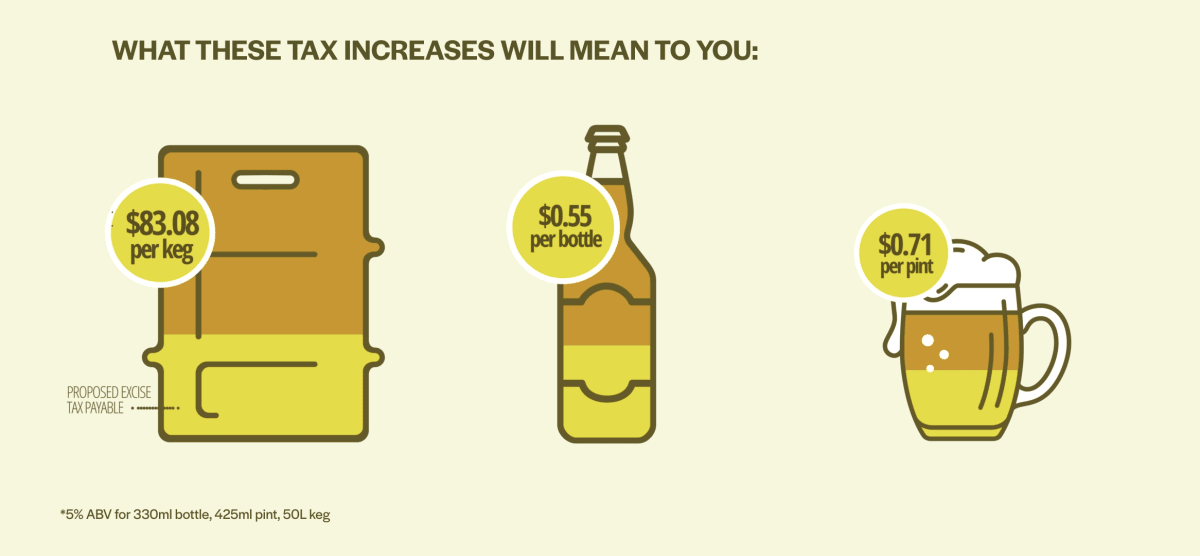
Brewing industry players and hospitality venues have asked the Government for a one-off, 50 percent cut to the tax on bulk beer to bars and cafes. The #cutthekegtax campaign, launched last month, calls for the same gesture of goodwill for hospitality venues that the Government handed out to car owners earlier in the year when petrol prices soared.
Government officials responded with a polite 'No'.
Crunch time is July 1
Beer drinkers aren’t used to big price increases. Over the past 10 years, prices have risen steadily, but not dramatically, according to Statistics New Zealand figures. Between March 2020 and March 2022, average prices went up 4.4 percent.
That’s going to change, and July 1 is likely to be the start, Wood says, as that’s when the new excise duties come in and also when supermarkets adopt their next quarterly pricing. Liberty Brewing will put its prices up around 10 percent, he says and companies with lower margins might be forced into bigger increases.
“There are some huge price rises coming - ours could be tame. There are craft beers which have been chasing the volume market and have had low margins, lower than ours.
“Talking to category managers in grocery they are telling me everyone is putting their prices up on July 1.”
Dylan Firth, executive director of the Brewers Association of New Zealand agrees with Wood about the coming price hikes.
“To date, a lot of brewers have been absorbing a lot of these cost increases, but over the next 12 months they are going to have to pass them on to retail and through to customers. How much? It depends on how long they have been holding prices down, but the excise tax is big cost - an extra 6.9 percent is significant.”
CPI overtakes the price of beer – for now
Firth worries about the impact of a future price increase on bars and cafes, already struggling because of Covid restrictions and customer nervousness.
“People have not wanted to put prices up because the hospitality sector has had a rough run, so many brewers decided to absorb costs, especially on keg beer, which is exclusively for hospo.”
Angus Kidman is editor at large at global comparison site Finder. Finder statistics confirm New Zealand brewers have put up prices more than wine and spirits companies over the past 10 years; still, rises have still been significantly lower than inflation.
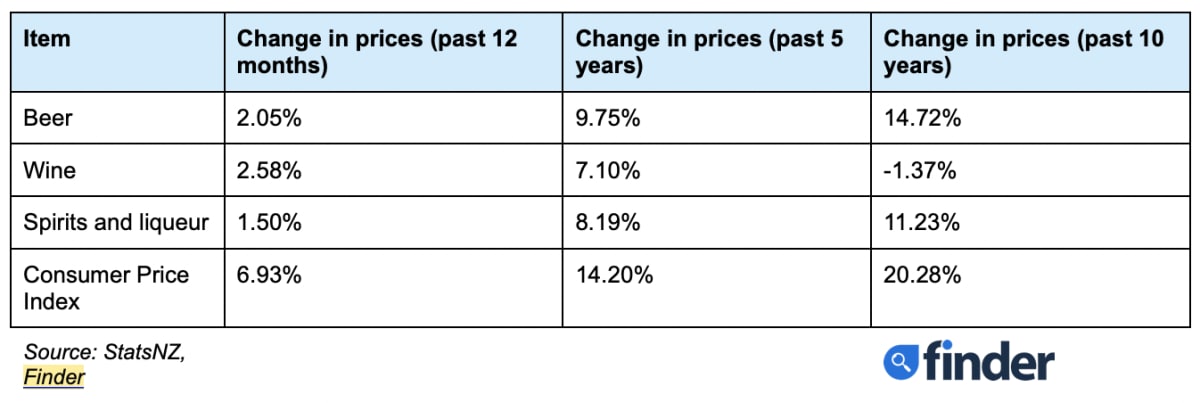
"Given alcohol prices have risen by less than inflation, craft brewers do have some capacity to pass on price rises,” Kidman says. In this category, consumers expect to pay a premium, so there won't necessarily be pushback with a small increase. But I'd imagine that a 10 percent rise might push sales down.
Beer and boycotts
The price of a pint is a big deal. West Coast drinkers famously boycotted pubs in 1947 after the government, which at that time set the price of beer, raised it from 6 pence to 7 pence. West Coast trade unions got involved in the dispute and miners and sawmill workers who drank at the holdout 6 pence pubs walked off the job, refusing to work alongside their 7 pence pub scab colleagues.
If New Zealand beer prices go up next month, we will not be alone. Similar cost pressures are hitting brewers - and their customers - overseas. The German Beer Association told daily newspaper Bild the price of beer could rise by up to 30 percent in the coming months. Meanwhile, in the UK, one brewer said it had lifted prices 5.5 percent already this year and an unprecedented second hike was likely before Christmas.
Research earlier this month from consultancy CGA showed the price of the average English pint had gone up more than 70 percent since 2008, and for the first time had topped £8 in a London pub.
New Zealand’s craft beer producers will be cushioned somewhat because times have been good over the past few years. Alcohol consumption may be down overall in New Zealand, but craft beer sales have risen steadily.
In the year to October 2021, craft beer’s share of supermarket sales rose to 18 percent, according to a Brewers Association report, up from 12 percent the year before.
"You might get a few breweries drop out, particularly smaller regional ones. Economies of scale still apply and if you aren’t doing decent volume it could be tough." – Joseph Wood
“I don't think we are going to be able to maintain that growth,” Wood says, “but we hope we can remain stable and maintain our margins. That’s going to be better than going backwards".
“But I think you might get a few breweries that drop out, particularly smaller regional ones. Economies of scale still apply and if you aren’t doing decent volume it could be tough.”
Things will get even tougher when the proposed container recycling scheme comes in, he says, adding to the upfront cost for people buying beer.
The Government is planning for the scheme to be operational “by 2025”.
Consumption likely to drop
And beer drinkers? How are they going to take the increase in the price of their favourite brew?
Wood reckons a good percentage of craft beer’s recently won-over drinkers won’t go back to mainstream beers. But they will likely cut back.
In the same way people find it hard to go back to Nescafe when they get used to cafe-brewed coffee, so discerning beer drinkers will likely stick with craft beer, he says.
“People are passionate about it. But they will buy less.”
In the end, there’s going to be no choice for beer drinkers but to pay more, he says.
“Consumers are going to have to get used to higher prices, or breweries are not going to be there to produce beer.”







